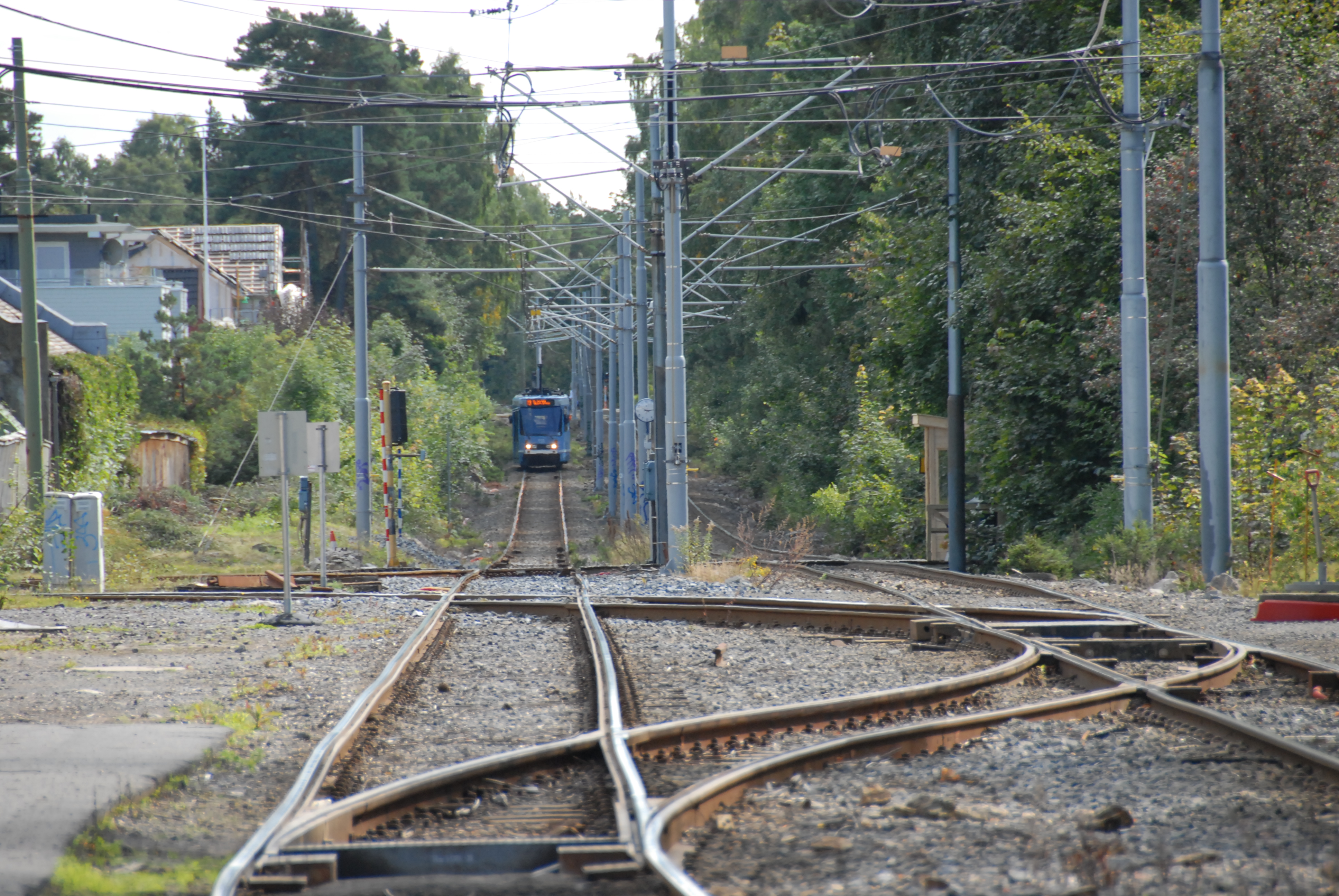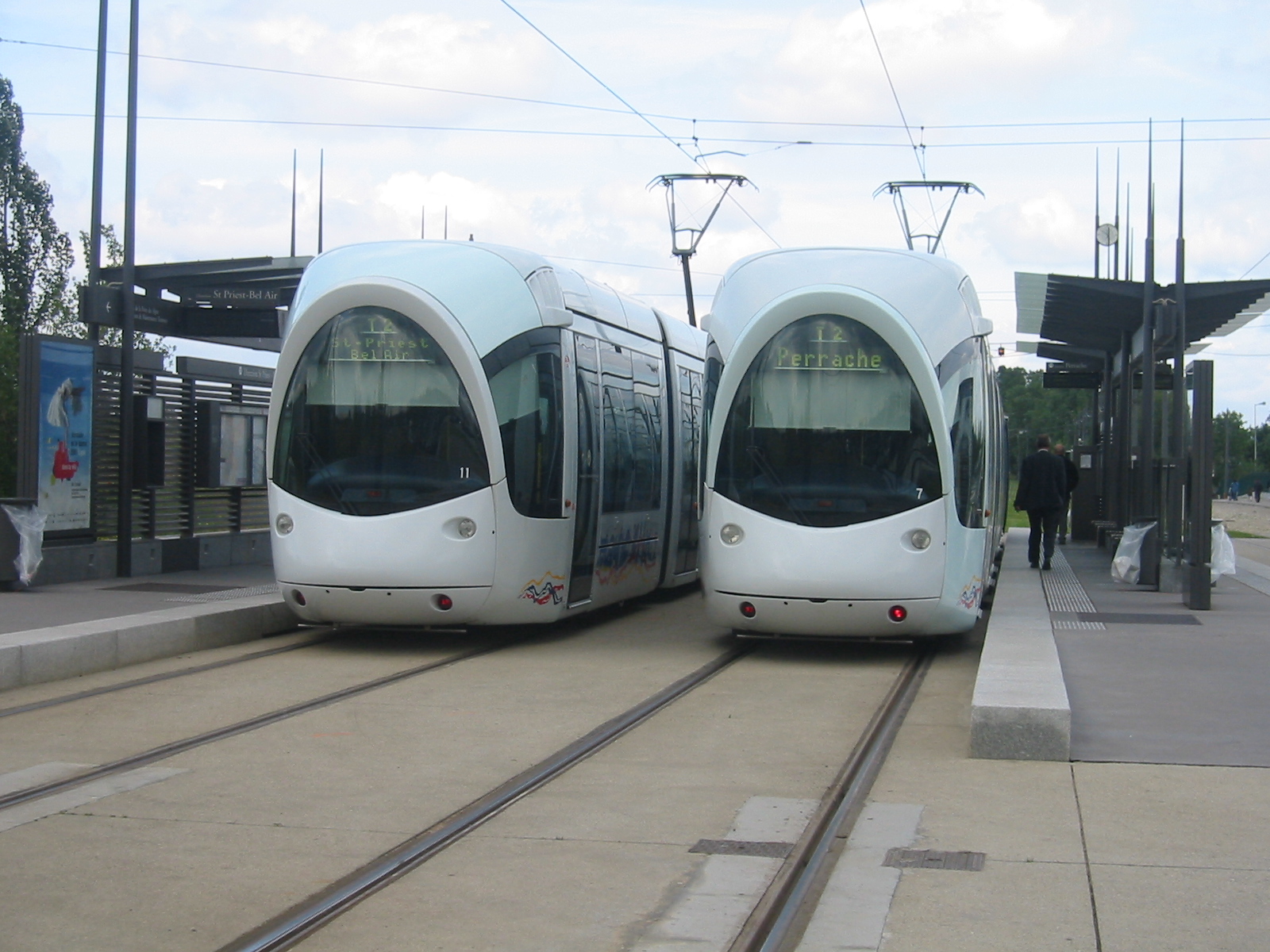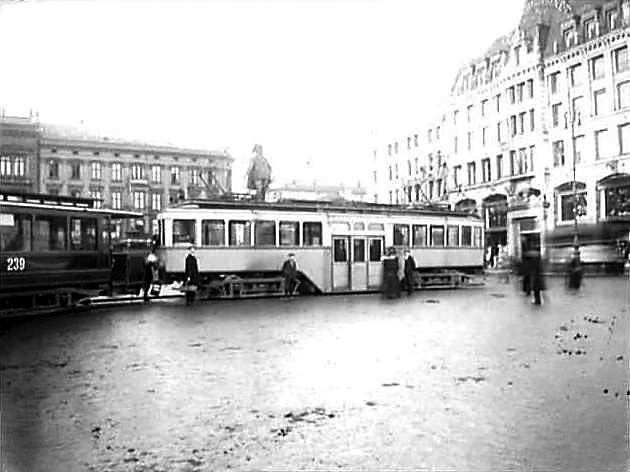|
Holtet (station)
Holtet is a tram stop on the Ekeberg line of the Oslo Tramway. It is located at Holtet in Ekeberg, in the borough of Nordstrand, in Oslo, Norway. It was opened on 11 June 1917 by A/S Ekebergbanen and has a balloon loop A balloon loop, turning loop, or reversing loop ( North American Terminology) allows a rail vehicle or train to reverse direction without having to shunt or stop. Balloon loops can be useful for passenger trains and unit freight trains. Bal .... The station is served by lines 13 and 19. Holtet also has a tram depot nearby. References Oslo Tramway stations in Oslo Railway stations opened in 1917 1917 establishments in Norway {{Norway-tram-stub ... [...More Info...] [...Related Items...] OR: [Wikipedia] [Google] [Baidu] |
Nordstrand, Norway
Nordstrand () is a borough of the city of Oslo, Norway. It borders Gamle Oslo in the north, Østensjø in the east and Søndre Nordstrand in the south. The borough is located in the southern part of the city and with a population of 52,459 people as of 2020. In 2004, Nordstrand was merged with two other boroughs, Lambertseter and Ekeberg-Bekkelaget, to form what is today known simply as Nordstrand. First and second generation immigrants make up 14.6% of the population, which is the lowest percentage in the entire city. The borough is named after a house named ''Nordstranden'', located at Mosseveien 196. Nordstrand is one of the wealthiest boroughs in Oslo, and net incomes, real estate prices, and life expectancy are among the city's highest. In demographic statistics Oslo is usually divided into an eastern and a western part. As Nordstrand differs significantly from its bordering boroughs, it is often considered as belonging to the western part even though it is geographically lo ... [...More Info...] [...Related Items...] OR: [Wikipedia] [Google] [Baidu] |
Oslo
Oslo ( , , or ; sma, Oslove) is the capital and most populous city of Norway. It constitutes both a county and a municipality. The municipality of Oslo had a population of in 2022, while the city's greater urban area had a population of in 2019, and the metropolitan area had an estimated population of in 2021. During the Viking Age the area was part of Viken. Oslo was founded as a city at the end of the Viking Age in 1040 under the name Ánslo, and established as a ''kaupstad'' or trading place in 1048 by Harald Hardrada. The city was elevated to a bishopric in 1070 and a capital under Haakon V of Norway around 1300. Personal unions with Denmark from 1397 to 1523 and again from 1536 to 1814 reduced its influence. After being destroyed by a fire in 1624, during the reign of King Christian IV, a new city was built closer to Akershus Fortress and named Christiania in honour of the king. It became a municipality ('' formannskapsdistrikt'') on 1 January 1838. The city fu ... [...More Info...] [...Related Items...] OR: [Wikipedia] [Google] [Baidu] |
Norway
Norway, officially the Kingdom of Norway, is a Nordic country in Northern Europe, the mainland territory of which comprises the western and northernmost portion of the Scandinavian Peninsula. The remote Arctic island of Jan Mayen and the archipelago of Svalbard also form part of Norway. Bouvet Island, located in the Subantarctic, is a dependency of Norway; it also lays claims to the Antarctic territories of Peter I Island and Queen Maud Land. The capital and largest city in Norway is Oslo. Norway has a total area of and had a population of 5,425,270 in January 2022. The country shares a long eastern border with Sweden at a length of . It is bordered by Finland and Russia to the northeast and the Skagerrak strait to the south, on the other side of which are Denmark and the United Kingdom. Norway has an extensive coastline, facing the North Atlantic Ocean and the Barents Sea. The maritime influence dominates Norway's climate, with mild lowland temperatures on the se ... [...More Info...] [...Related Items...] OR: [Wikipedia] [Google] [Baidu] |
Ekeberg Line
The Ekeberg Line ( no, Ekebergbanen) is a long light rail line of the Oslo Tramway which runs from Oslo Hospital tram stop, Oslo Hospital to Ljabru in Oslo, Norway. Operated by lines 13 and 19, it serves the area of Nordstrand, Norway, Nordstrand and the neighborhoods of Ekeberg, Jomfrubråten, Bekkelaget and Ljan. The line is operated by Oslo Sporvognsdrift using SL79 and SL95 trams on contract with Ruter. The line itself is owned by Sporveien. At Oslo Hospital (station), Oslo Hospital, the line connects to the Bjørvika Line, which runs to the city center. Proposals for a line in the area were first launched 1897, but not until 1914 were the necessary permits granted. The line was built and operated by Ekebergbanen (company), Ekebergbanen. The line opened in 1917, and connected to the Gamleby Line to reach Stortorvet (station), Stortorvet in the city center. The line differed from the street trams in that it ran in its own right of way and used 1,200 volt supply, unlike the 6 ... [...More Info...] [...Related Items...] OR: [Wikipedia] [Google] [Baidu] |
Tram Stop
A tram stop, tram station, streetcar stop, or light rail station is a place designated for a tram, streetcar, or light rail vehicle to stop so passengers can board or alight it. Generally, tram stops share most characteristics of bus stops, but because trams operate on rails, they often include railway platforms, especially if stepless entries are provided for accessibility. However, trams may also be used with bus stop type flags and with mid-street pavements as platforms, in street running mode. Examples Most tram or streetcar stops in Melbourne and Toronto and other systems with extensive sections of street-running have no associated platforms, with stops in the middle of the roadway pavement. In most jurisdictions, traffic cannot legally pass a tram or streetcar whose doors are open, unless the tram is behind a safety zone or has a designated platform. On the other hand, several light rail systems have high-platform stops or stations with dedicated platforms at railway ... [...More Info...] [...Related Items...] OR: [Wikipedia] [Google] [Baidu] |
Ekeberg Line
The Ekeberg Line ( no, Ekebergbanen) is a long light rail line of the Oslo Tramway which runs from Oslo Hospital tram stop, Oslo Hospital to Ljabru in Oslo, Norway. Operated by lines 13 and 19, it serves the area of Nordstrand, Norway, Nordstrand and the neighborhoods of Ekeberg, Jomfrubråten, Bekkelaget and Ljan. The line is operated by Oslo Sporvognsdrift using SL79 and SL95 trams on contract with Ruter. The line itself is owned by Sporveien. At Oslo Hospital (station), Oslo Hospital, the line connects to the Bjørvika Line, which runs to the city center. Proposals for a line in the area were first launched 1897, but not until 1914 were the necessary permits granted. The line was built and operated by Ekebergbanen (company), Ekebergbanen. The line opened in 1917, and connected to the Gamleby Line to reach Stortorvet (station), Stortorvet in the city center. The line differed from the street trams in that it ran in its own right of way and used 1,200 volt supply, unlike the 6 ... [...More Info...] [...Related Items...] OR: [Wikipedia] [Google] [Baidu] |
Oslo Tramway
The Oslo tram network ( no, Trikken i Oslo, short from ', 'electric') is the tram system in Oslo, Norway. It consists of six lines with 99 stops and has a daily ridership of 132,000. It is operated by , a subsidiary of the municipally-owned who maintain the track and 72 tram vehicles on contracts with the public transport authority . The system operates on standard gauge and uses 750 V DC overhead. Depot, workshops and headquarters are at (at the terminus of lines 13 and 17). There is also a depot at (along lines 18 and 19) that is home to the technical company InfraPartner, which maintains the track for the tram and metro systems in Oslo, and a small office building for . History The first tram in Oslo was opened in 1875 with a short line between Homansbyen west of the city centre, Oslo West Railway Station and a sideline to Grønland, east of the city centre. The first "trams" were in fact horse-drawn vehicles on flanged steel wheels. The first expansion of the line came ... [...More Info...] [...Related Items...] OR: [Wikipedia] [Google] [Baidu] |
Ekeberg
Ekeberg is a neighborhood in the city of Oslo, Norway. The Norway Cup soccer tournament takes place at Ekebergsletta every summer. "Sletta" means "the plain". The painting "The Scream" by Edvard Munch is painted from Utsikten ("the view"), a part of Ekeberg. In the area are a number of old Iron Age grave mounds and Bronze Age ritual sites. This establish the area of Ekeberg as one of the oldest inhabited places around Oslo. During the Middle Ages, the farm of Ekeberg belonged to Hovedøya Abbey. The area was later taken by the crown. From 1760, the farm of Ekeberg was run by an appointed owner, and his relatives owned the farm thereafter. In the area, a number of small homesteads under the main farm was erected the following century. The first suburban settlement came around 1900, and the early suburb was raised in the years prior to 1935. Many of the early houses are still present in the area. Ekeberg belonged to Oslo from 1947. In 1926 Roald Amundsen's airship ''Norge'', wa ... [...More Info...] [...Related Items...] OR: [Wikipedia] [Google] [Baidu] |
Ekebergbanen (company)
AS Ekebergbanen was a private company that built and operated the Ekeberg Line in Oslo, Norway. It was founded 27 March 1914, and the line opened 11 June 1917 from Stortorvet to Sæter. The company also built a line to Simensbråten that was closed 29 October 1967. Ekebergbanen also operated buses in Oslo. History The company was founded on 24 March 1914, and started construction of the line immediately, but the delivery of technical equipment and rolling stock was delayed because of the First World War. The company's formal establishment was therefore made on 1 June 1917, when the line between Stortorvet and Sæter was opened. In 1918, AS Ekebergbanen sent an application to build a funicular from Gamlebyen (then called Oslo) to Ekebergplatået. The stations were mostly built with tiny wooden sheds in new baroque architectural style by the Norwegian architect Erik Glosimodt. On the station Holtet, a larger station building was constructed, also drawn by Erik Glosimodt. This ... [...More Info...] [...Related Items...] OR: [Wikipedia] [Google] [Baidu] |
Balloon Loop
A balloon loop, turning loop, or reversing loop ( North American Terminology) allows a rail vehicle or train to reverse direction without having to shunt or stop. Balloon loops can be useful for passenger trains and unit freight trains. Balloon loops are common on tram and streetcar systems. Many streetcar and tram systems use single-ended vehicles that have doors on only one side and controls at only one end. These systems may also haul trailers with no controls in the rear car, and, as such, must be turned at each end of the route. History Balloon loops were first introduced on tram and, later, metro lines. They did not commonly appear on freight railways until the 1960s, when the modernising British Rail system introduced '' merry-go-round'' (MGR) coal trains that operated from mines to power stations and back again without shunting. Tramways On the former Sydney tram system, loops were used from 1881 until the second-generation system's closure in 1961. Initia ... [...More Info...] [...Related Items...] OR: [Wikipedia] [Google] [Baidu] |
Baneforlaget
Nils Carl Aspenberg (born 26 August 1958) is a Norwegian journalist, historian, author and businessperson. He has written numerous books on rail transport, and is chief executive officer of Baneforlaget. Aspenberg has a ''siviløkonom'' degree from BI Norwegian Business School. He worked as a conductor for Oslo Sporveier since 1980, and from 1981 tram and 1983-2003 subway engineer, as well as a bus driver since 1994. He has written more than thirty books on rail transport and local history and is owner of the publishing company Baneforlaget, which he founded in 1994. The company has published about 60 books. Aspenberg has been an active member of the Norwegian Railway Club, and was editor-in-chief of ''MJ-bladet'' from 1999 to 2003. He has also published the local history magazines ''Røakontakten'' from 1994 to 2008, and ''Langt Vest i Aker'' since 1997. He is also an editorial member of ''Lokaltrafikk'' and since 2013 also editor-in-chief. He is also an editorial member of '' B ... [...More Info...] [...Related Items...] OR: [Wikipedia] [Google] [Baidu] |






